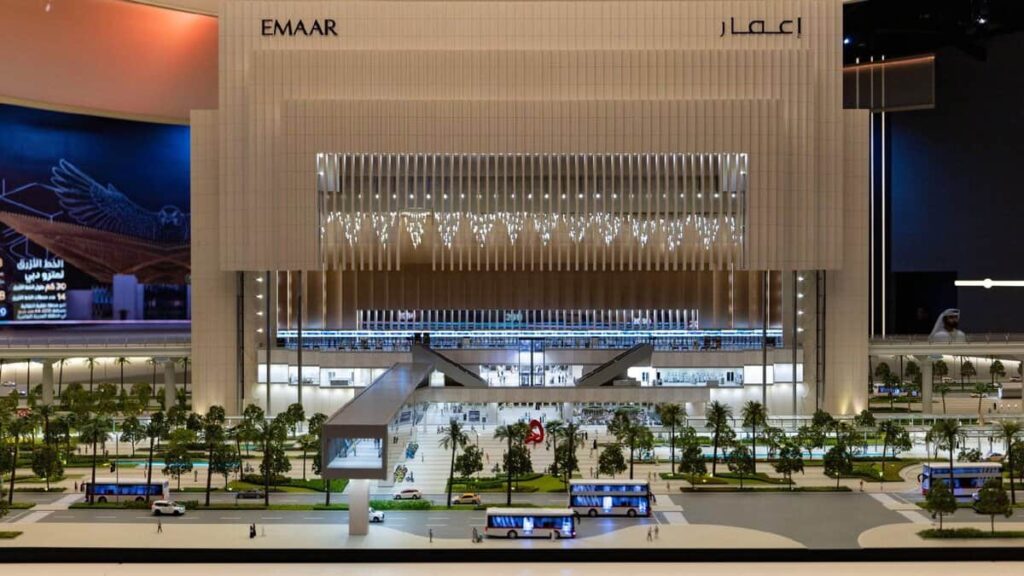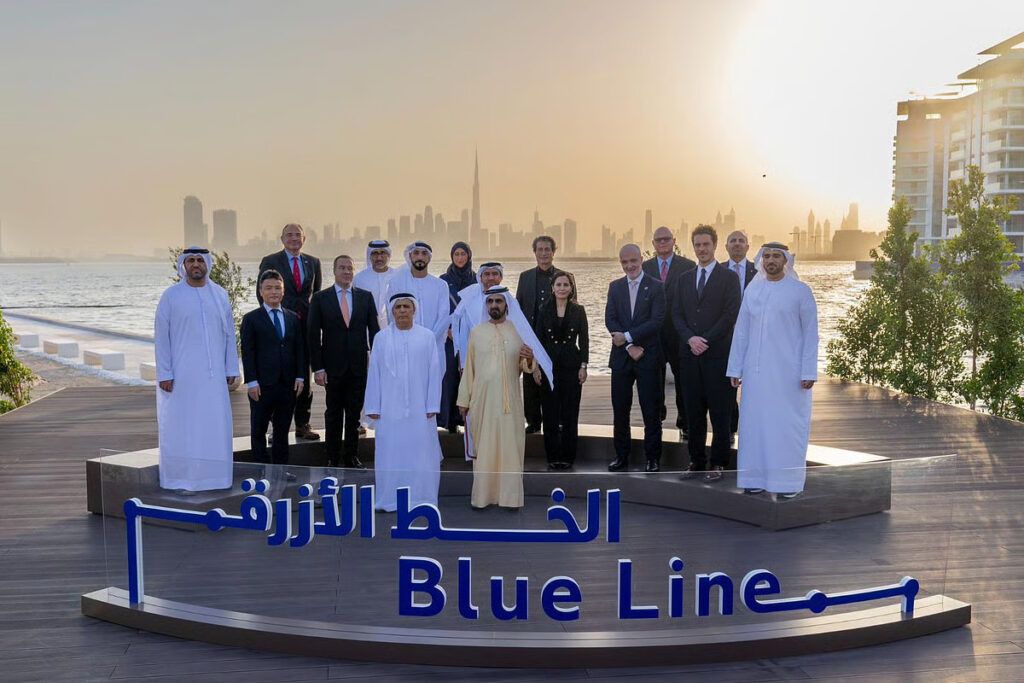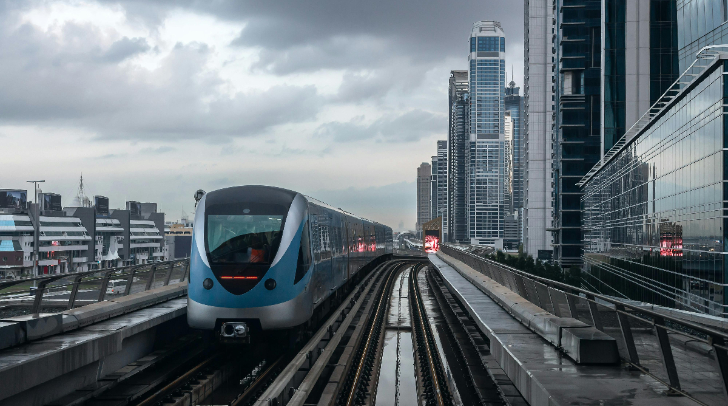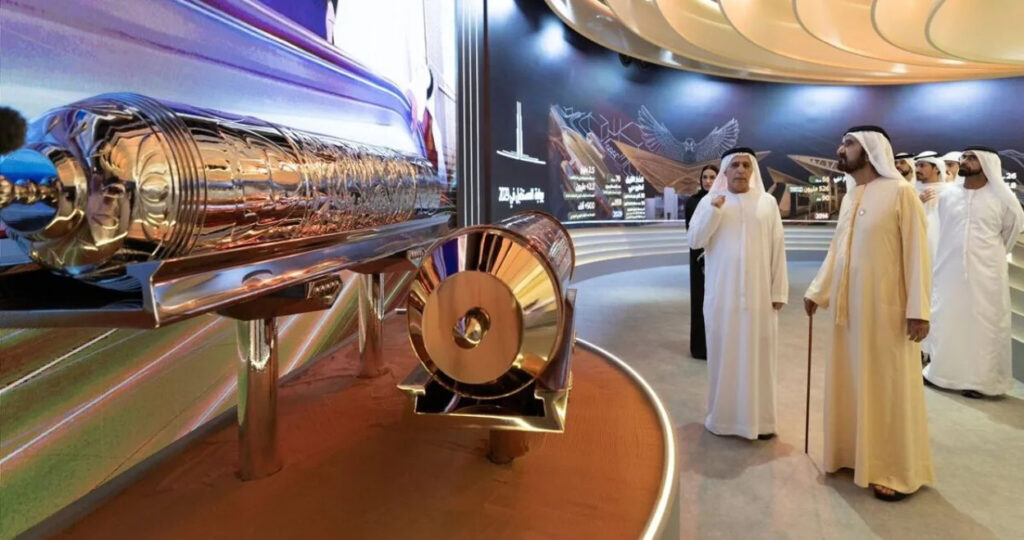On June 9, 2020, His Highness Sheikh Mohammed bin Rashid Al Maktoum, Vice President, Prime Minister of the UAE and Ruler of Dubai, marked the start of building the first Blue Line Metro Station, highlighting Dubai’s firm commitment to growth and fresh ideas. The ceremony launches construction on the challenging project, so that passengers can start using the new line starting September 9, 2029—a date selected in honor of when Dubai Metro began running on 09-09-2009.
Table of Contents
A Tribute to the Vision of the Past, A Leap Toward the Future
To begin, the ceremony paid tribute to the late Sheikh Rashid bin Saeed Al Maktoum, the person who came up with the idea of building a Metro in Dubai. The gallery featuring historical moments showed Sheikh Mohammed his first encounters with metro in foreign cities and rare pictures from the construction period of the first Dubai Metro.
The Highest Metro Station in the World
Unveiling the design for the Emaar Properties station was a highlight at the event, especially since it will be the tallest Metro station in the world at 74 metres. World-famous architectural firm Skidmore, Owings & Merrill, the experts behind Burj Khalifa and the Sears Tower, are behind its unique golden cylindrical structure that mixes Dubai’s luxury with today’s innovation.

Covering an area of 11,000 square metres, the station will adopt modern architectural elements including Jura limestone, bronze panels, and granite floors. The ceiling will also use glass panels to bring natural light inside. Sensible and warm earthy colors, along with strong materials, express the community’s durability and close relationship with their environment.
Blue Line: Dubai’s New Mobility Lifeline
The Blue Line of the Dubai Metro will be 30 kilometres long and join together nine significant cities like Mirdif, Al Warqa, Dubai Silicon Oasis, Academic City, Dubai Creek Harbour, and Dubai Festival City. The total population in these areas is expected to reach one million by the year 2040 as per the Dubai 2040 Urban Master Plan.

Key features of the Blue Line include:
- The Blue Line has a total of 14 stations, out of which 9 are above ground and 5 are below.
- There are 3 interchange stations namely Creek Station (Green Line), Centrepoint (Red Line), and International City 1 (Blue Line).
- There are bus bays, bike and scooter racks, taxi stands, and designated parking for People of Determination for the convenience of all users.
- This is the biggest underground interchange station ever built in Dubai Metro, with a coverage area of over 44,000 square meters and space for 350,000 passengers every day.
- This line includes the first-ever 1,300-metre-long bridge stretching over Dubai Creek.
Emaar Secures Naming Rights
Emaar Properties bought naming rights for the flagship station for a period of ten years, beginning in 2029. More details will probably be unveiled soon about the naming of new stations on the Blue Line, as part of Dubai’s efforts to incorporate branding in its infrastructure design.
Also Read: Portugal won the Nations League Title by Defeating Spain in a Penalty Shootout
Sustainability and Scale
Management of the project has been awarded to a Turkish-Chinese consortium (comprising Mapa, Limak, and CRRC) and they are expected to earn an annual profit of Dh56 million. The new line will have capacity to move 200,000 passengers per day by 2030 and an increase to 320,000 by 2040. It is estimated that this will reduce rush-hour traffic congestion by 20% and serve up to 46,000 passengers per hour going in both direction. For the first time, the Dubai transport project will follow green building standards, and achieve the top Platinum Category certification.

Conclusion
Rather than just a new transport system, the Blue Line Metro project reveals Dubai’s commitment to remain ahead of the times and future-ready city. When Sheikh Mohammed laid the first stone, he confirmed the city’s progress and remembered the beginnings of this journey that happened decades earlier. Dubai will show everyone its unique skills at uniting tradition, technology, and innovative urban ideas when the line is open to the public on September 9, 2029.

